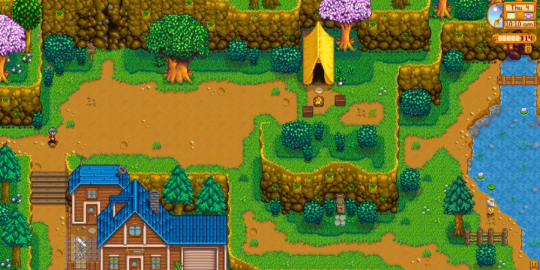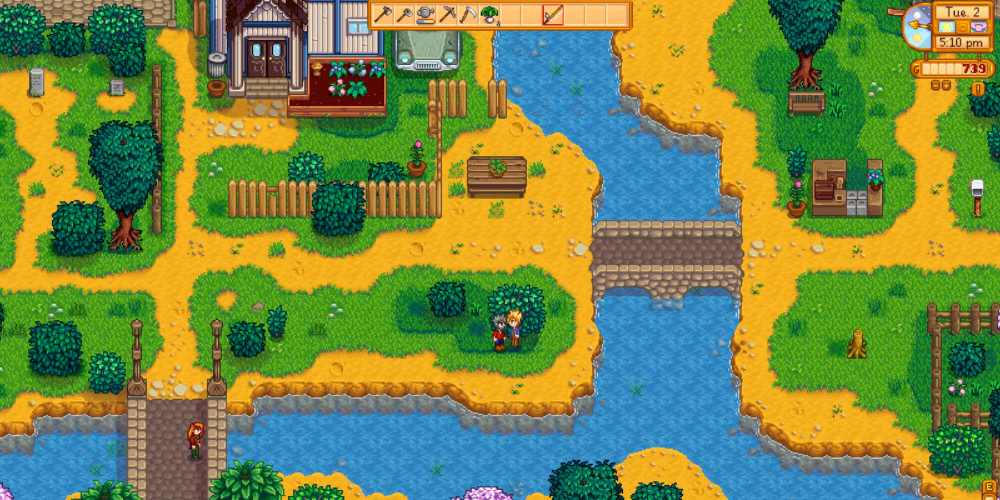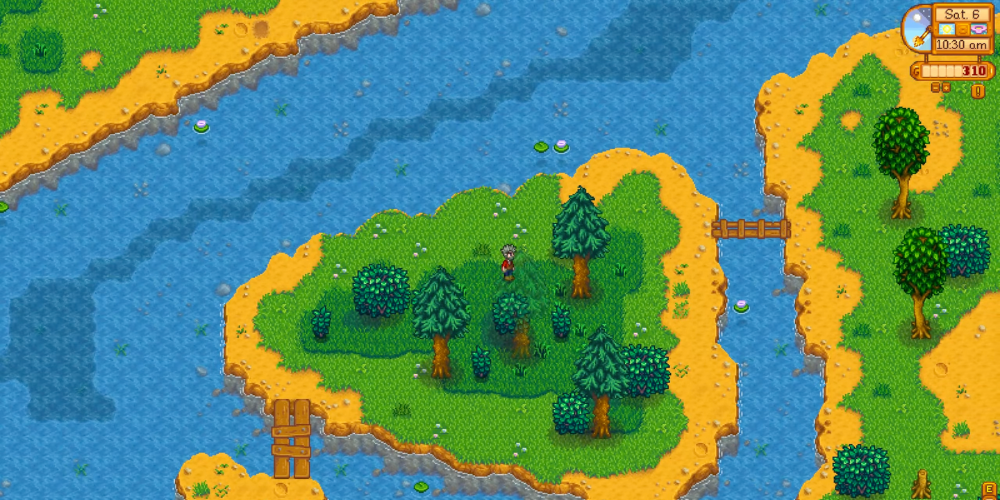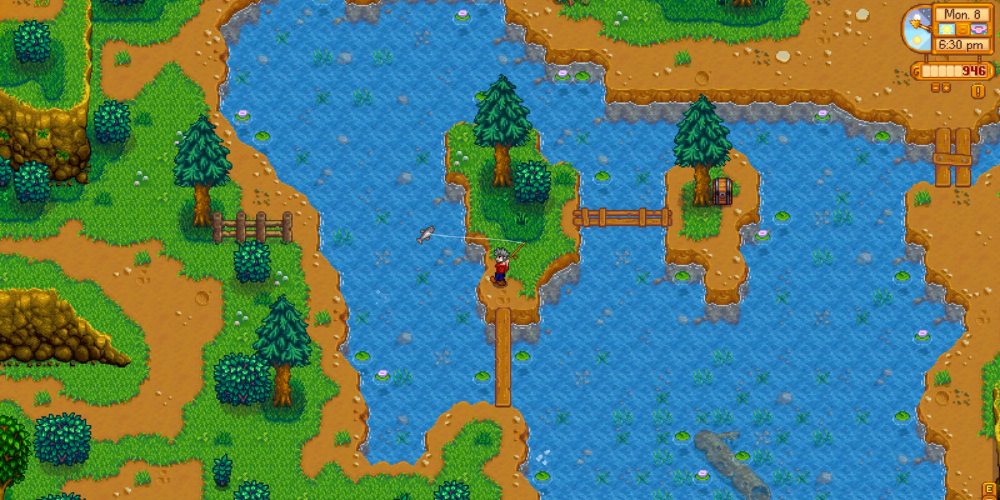
In the enchanting realm of Stardew Valley, transforming a patch of overgrown land into a thriving, profitable farm is an adventure that captivates many. Yet, to truly excel and make the most out of your farming experience, strategic planning and base building can't be overlooked. This guide unveils the secrets to maximizing your farm’s potential through meticulous planning, optimization of resources, and smart design choices. By adhering to principles, you can elevate farming game, enhance productivity, and even establish a farm that mirrors your personal essence.
Understanding Your Farm's Layout
Before diving headlong into farming, analyzing your farm's layout is crucial. Stardew Valley offers several farm maps, each with unique features and challenges. Whether it’s the Riverland Farm with its abundance of water, the Forest Farm rich in foraging opportunities, or the Standard Farm providing ample open space, your choice significantly impacts your strategy.
Take into consideration the distribution of water bodies, rocks, and trees, and plan your clearing activities accordingly. A good practice is to sketch a rough blueprint of how you envision your farm. Allocate areas for crops, livestock, artisan goods production, and leisure facilities like a fish pond or a greenhouse. Such foresight in planning saves time, energy, and resources in the long run.
Optimizing Crop Selection and Layout
Selecting the right crops is at the heart of successful farming. Each season brings a new set of crops that can be planted, each with its own growing time, cost, and return on investment. High-value crops like strawberries in spring, blueberries in summer, and cranberries in fall are essential for generating profit efficiently. However, diversification is just as important to sustain cash flow and stock your kitchen with ingredients for cooking and crafting.

Layout is equally important. Adopt farming practices such as the use of sprinklers to free up time for other tasks. Create a grid layout that optimizes sprinkler coverage, ensuring no tile goes to waste. Additionally, incorporating trellises for crops like hops and grapes in a manner that doesn’t block your path will streamline your farming operations.
Leveraging Vertical Farming: The Utilization of Sprinklers and Scarecrows
Sprinklers and scarecrows are indispensable tools in Stardew Valley, allowing you to manage your farm more efficiently. Advanced sprinklers water your crops automatically, saving invaluable time each morning. The placement of sprinklers should be strategic, ensuring maximum coverage of your crops while also considering the layout of your farm to maintain accessibility.
Scarecrows, on the other hand, protect your crops from pesky crows. The effective range of a scarecrow extends in a radius of 8 tiles, safeguarding a considerable amount of crops. Strategic placement of scarecrows ensures that every crop tile is within protection range, reducing the likelihood of crop loss.
The Role of Livestock in Your Farm's Economy
Livestock is not only a source of daily income but also contributes to farm diversification. Cows, chickens, goats, and sheep provide essential products such as milk, eggs, and wool, which can be further processed into artisan goods like cheese, mayonnaise, and cloth. The profitability of livestock hinges on the level of care they receive, including regular feeding, petting, and maintaining clean barns and coops.
Integration of a silo early on ensures a consistent supply of feed during all seasons, sparing the added expense of buying feed from Marnie’s Ranch. Additionally, upgrade your barns and coops to include auto-feeders, further streamlining the care process and ensuring your animals are well-fed even on your busiest days.
Expanding Beyond the Farm: Fishing, Mining, and Foraging

While your farm is the centerpiece of your Stardew Valley experience, branching out into fishing, mining, and foraging is crucial for comprehensive growth. Fishing provides a steady income stream and ingredients for cooking and crafting. Mining is essential for acquiring ores and minerals for tool upgrades and construction projects. Foraging, similarly, not only supplements your income but also provides resources for crafting and gifts for villagers, fostering relationships and unlocking unique benefits.
Allocate specific days or parts of your day to focus on these activities. This helps in maintaining a balance between farm work and exploration, ensuring steady progress in all facets of your Stardew Valley life.
Infrastructure Investments: Sheds, Barns, and Coops
As your farm grows, so does the need for infrastructure to support it. Sheds can be transformed into storage spaces for crops and artisan goods or converted into workshops housing kegs, preserves jars, and looms. Upgraded barns and coops not only allow for a larger number of animals but also for the integration of machines like mayonnaise makers and cheese presses inside, saving outdoor space for more crops or decoration.
Planning the location of these buildings is key to maintaining an efficient workflow on your farm. Position them strategically to minimize the time spent traveling from one operation to another, thereby maximizing productivity.
Seasonal Planning: Adapting Your Farm Throughout the Year
Each season in Stardew Valley brings new opportunities and challenges. Planning your farm activities around the seasons ensures you’re always prepared and able to capitalize on seasonal crops and festivals. For instance, winter provides the perfect opportunity to focus on mining, fishing, and upgrading tools, as crop cultivation takes a backseat.

Additionally, utilize the winter season to re-evaluate your farm layout and make any necessary adjustments in preparation for spring. This proactive approach ensures you hit the ground running when the new farming season arrives.
Community and Relationships: The Heart of Stardew Valley
Beyond the crops, livestock, and artisan goods, the heart of Stardew Valley lies within its community. Forming relationships with the townsfolk, attending festivals, and completing quests from the bulletin board not only enriches your gaming experience but also offers tangible rewards, from recipes to artifacts.
Maintaining a balance between your farming responsibilities and community engagement can be challenging but is ultimately rewarding. Each friend you make and relationship you build opens up new aspects of the game, further enhancing your Stardew Valley adventure.
Conclusion
The path to maximizing your farm in Stardew Valley is both challenging and immensely rewarding. Through strategic planning, thoughtful crop selection, and efficient resource management, your farm can transform into a thriving, profitable operation. Remember, every decision from the layout of your farm to the relationships you cultivate with the townsfolk plays a crucial role in your journey. With persistence, creativity, and a little bit of strategy, your farm will not only flourish but also become a unique reflection of your personal dedication and hard work.
So, grab your hoe, plant that first seed, and embark on the rewarding journey of creating your dream farm in Stardew Valley. The land may be overgrown and the tasks ahead daunting, but with strategic planning and a bit of elbow grease, the farm of your dreams is within reach.